Like Oscar Wilde’s Dorian Gray there are many molecules with a sinister mirror image twin. Failure to recognise the distinct properties of a molecule’s mirror image version can have tragic consequences, as demonstrated by the thalidomide scandal in the 1950s and 1960s. Chiral molecules interact with other chiral structures differently from their mirror image twin and being widespread in nature, they have been exploited in pharmaceuticals, agriculture, cosmetics and food. The net global market is currently valued at over $70 billion (£57 billion) creating high stakes for correctly telling apart the two mirror-image molecules or enantiomers.

But as enantiomers are chemically identical, distinguishing between the two using physical properties like boiling and melting points or density is impossible. If you visit a lab in academia or industry it is likely that chemists will be using techniques that are at least 50 years old to distinguish between enantiomers, despite their shortcomings. But now some of the world’s best informed and most creative chiral specialists are developing an array of technologies to overcome these problems when it comes to telling one enantiomer from the other.
Not so fast

In many labs around the world the go-to technique for determining the purity of a sample for one enantiomer versus another – the enantiomeric excess – is chromatography. Here a solvent or ‘mobile phase’ is drawn through a ‘stationary phase’ – usually a functionalised silica gel. Different chemicals dissolved in the mobile phase move through the chromatographic device at different speeds. Incorporating a chiral chemical into the mobile or stationary phase, or reacting the sample with a chiral derivatising agent beforehand, will lead to different aggregates forming for each enantiomer on account of the availability of hydrogen bonding, for instance, or ion pair formation. The different aggregates then move through the device at different speeds separating one enantiomer from the other. First demonstrated in the 1950s, there are all kinds of variations of this technique. The most popular for enantiomer separation is high-performance liquid chromatography (HPLC), which Daniel Armstrong at the University of Texas at Arlington finessed in the 1980s and 1990s, reaching detection thresholds of 0.001%.
The downside is the prior purification of the samples required, which can be more difficult and time-consuming than measuring the chirality itself, even more so when looking at biological or environmental samples. Interest in measuring chirality in biological samples is on the rise with increasing recognition that it can be used to diagnose conditions including cancer, diabetes and kidney disease, as well as problems in the brain. However, as Armstrong tells Chemistry World, ‘You’re talking about blood or urine or brain tissues – goodness, there are all kinds, it can be a mess!’
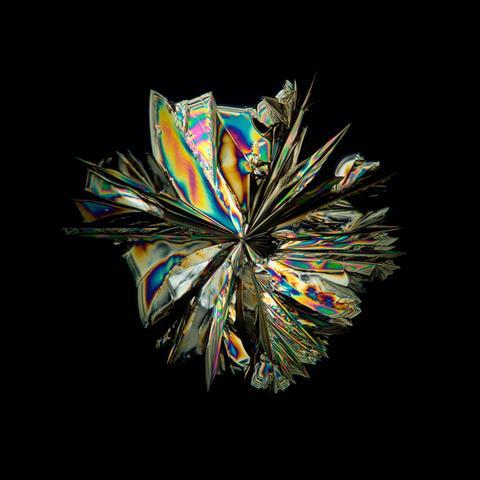
In addition, sample volumes tend to be small and the imbalances tiny, so the technique must be highly sensitive and able to accurately quantify the enantiomeric excess. On the plus side, as chromatography is ultimately a separation technique, it is possible to incorporate additional columns that separate the sample from all the biological pollutants before then using chromatography to find the relative ratio of the chiral components. This kind of 2D HPLC has also been around a while. As far back as 1991, researchers used it to measure concentrations of four different types of righthanded amino acids in urine, compared with the lefthanded. However, the use of 2D HPLC is mostly limited to academia. ‘The technique is new and the equipment [cost] is high,’ says Pixu Li, chief scientist of Chiral Quest, a chiral drug compounds supplier. This has meant that the technique has only recently started making its way into industry.
In any case, perhaps the real problem with HPLC is the need to optimise the components for the chemical of interest – that is, screening to find the right HPLC or gas chromatography column and conditions to separate the enantiomers. ‘That is also kind of tedious,’ says Li. ‘And sometimes you are kind of limited in your weapons. That is a drawback.’
In the beginning
There are other tried and tested ways of distinguishing chirality that can be found in the lab and two even pre-date chromatography. Circularly polarised light can distinguish between enantiomers because the electric field of the beam describes a helix as it moves through space meaning that it interacts differently with each enantiomer. Plane polarised light actually comprises both directions of circularly polarised components, and as the refractive index of chiral molecules differs, the plane of polarisation of the light transmitted by a chiral substance will be rotated one way or the other depending on the enantiomer. Furthermore, the difference in absorbance for light circularly polarised in one direction versus the other – the anisotropy factor – gives an indication of chirality for molecules that absorb light.

Well over a hundred years after the techniques were first devised, measuring the rotation of transmitted circularly polarised light – as in polarimetry – or the anisotropy factor in its absorption in circular dichroism are perhaps the only methods that compete with, as well as complement, chromatography. As Li points out, even when chromatography is used at Chiral Quest, actually quantifying the enantiomeric excess requires reference to a standard and these are often established using circular dichroism or polarimetry.
There are ways of getting more information from optical techniques. In the case of new or unfamiliar molecules, circular dichroism may be supplemented with NMR, further chiral chemistry or even x-ray crystallography to pin down functional and structural details and, ultimately, the enantiomeric excess. However, these additional modalities don’t address the real problem – the signal weakness.
Timeline
Two centuries of chirality
1808
Humble beginnings
EL Malus discovers optical activity in reflective glass surfaces
1832
Further discoveries
Jean Baptiste Biot discovers optical activity in tartaric acid
1848
Crystal chirality
Louis Pasteur identifies dissymmetry in crystals of tartaric acid salts
1857
Life's chirality
Louis Pasteur discovers biological enantioselectivity in the metabolism of tartaric acid
1893
I dub thee...
Lord Kelvin coins the term chirality
1895–96
Determination
Aimé Cotton publishes work on characteristic changes in optical rotation – later dubbed the Cotton effect – that opened the way to another way to discern chirality
1903, 1906 and 1907
Separation
Mikhail Tsvet invents, reports and demonstrates liquid chromatography
1950+
New kid on the block
Chiral chromatography enters the lab
1980–1990
Refinement
Daniel Armstrong and colleagues refine HPLC for separation of enantiomers
1990+
Another dimension
2D HPLC developed
1999
CISS or trans?
David Waldeck et al reports chiral-induced spin selection for probing chirality
2017
Metamaterial enhancement
Yuebing Zheng et al enhance circular dichroism signals using nanohole array moiré metamaterials
2019
In harmony
David Ayuso et al demonstrate chiral detection with second harmonic generation
2024
Mass spec steps up
Ouyang Zheng et al report modified mass spectrometry to distinguish between enantiomers
Both polarimetry and circular dichroism suffer from a mismatch of several orders of magnitude between the size of the molecule and the wavelength of the light, which sets the pitch – the distance between threads in the coil – of the helix the circularly polarised electric field draws through space. As the length of the molecule is negligible over the scale of the pitch what it experiences is more like a circle, which being planar cannot be chiral. The signal from the molecule’s interaction with the barely perceptible chirality of the beam is tiny so that the sensitivity is low and large sample volumes are needed. With something like vibrational circular dichroism detection levels of just 1% are still considered impressive, which does not cut it for commercial pharmaceuticals. ‘0.15% is the usual accepted level of impurity in an active pharmaceutical ingredient,’ says Li. A fast, universal, routine tool for gauging enantiomeric excess could save a lot of time in industry and even make chirality detection practical for diagnosing disease.

The next generation
Increasing the sensitivity of optical chiral detection techniques could be one way to develop a tool that is both user-friendly and sensitive. Yuebing Zheng at the University of Texas at Austin and colleagues are focusing their efforts on metamaterials – synthetic materials that display properties not usually found in nature. ‘The uniqueness of metamaterials is we can engineer the structure of materials,’ says Zheng, adding that this can introduce chiral properties to light, ‘even if you have linear light come in’. Among the structures Zheng works with are Moiré structures, layers of material just atoms to a few hundred nanometres thick that are stacked with a slight twist or atomic spacing mismatch so that their atoms or building blocks are slightly out of alignment. The structures have attracted huge interest for some of the wild electron behaviour observed, but they are also optically active like chiral molecules. In 2021, Zheng and colleagues demonstrated that with a tuneable Moiré structure of gold nanohole arrays and the help of microbubbles that encourage molecules to accumulate at hotspots where the signal enhancements are greatest, they could detect the chirality of glucose molecules in 10µl samples at concentrations of just 100pM. How these Moiré structures might scale for industry, where tonnes as opposed to microlitres of product needs to be tested, is unknown, however.
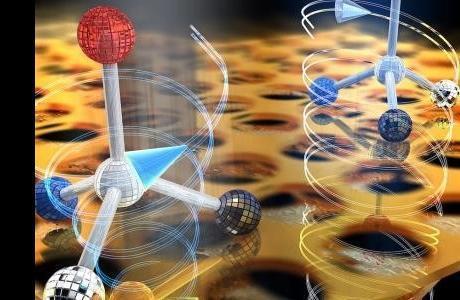
An alternative approach is to measure a different variable. As the problem with circular dichroism has been the molecule’s planar and hence achiral experience of the electric field, measuring the electrons the molecule emits when photoionised in the third dimension and taking the difference between the two opposing directions can give more sensitive chiral detection. Such photoelectron circular dichroism signals are typically orders of magnitude larger than regular circular dichroism. However, it generally requires vacuum conditions so that the emitted electrons are not scattered, limiting how practically it can be implemented.
Photoelectrons also provide a probe for chirality through chiral-induced spin selectivity (CISS). Quantum mechanics lays down fundamental restrictions on the transitions electrons in an atom can undergo based on the characteristics of the electron – such as energy level, orbital or spin – and the exciting field. As a result, the transitions can give an indication of the chirality of a molecule, an effect that David Waldeck, a chemist at the University of Pittsburg in the US, has been championing since he and his collaborator, Ron Naaman of the Weizmann Institute, observed the phenomenon in 1999. Although it is not yet clear what would make the approach commercially competitive, CISS has now been seen not just in chiral molecules but chiral quantum dots, metal oxides and even chiral circuits, making it potentially of interest for spintronics. Darpa is currently funding work on how the CISS effect might be used to detect chirality.
Others have found ways to structure the light so that it is more chiral over the spatial scales relevant to small molecules, for instance using twisted light where the wavefront varies around the optical axis with a pitch that can be much shorter than the wavelength of light, vector beams where the polarisation is inhomogeneously distributed in space, or by using multiple beams. David Ayuso at Imperial College London explains that although the electric field a small molecule experiences from circularly polarised light is effectively circular and not chiral, ‘you can make it chiral if you bend it a little bit’, for instance by superposing it with light polarised perpendicular to the circular plane at a higher frequency. This is something Ayuso and colleagues, then at the Max-Born Institute in Berlin, showed was, in theory, possible in 2019. The snag was that the molecule responds to higher harmonics that superpose the two beams rather than one beam or the other – a little like the way choral harmonies stir emotions that are not reached by one note on its own. Working with higher harmonics generally means higher laser intensities are needed because the harmonics are much weaker than the fundamental mode. However, more recently Ayuso and colleagues showed that with a tweak the setup could work even with ‘gentle intensities’ with no vacuum. Nonetheless, as things stand these photonic techniques are still largely a work in progress.
In February this year, researchers in China led by Ouyang Zheng at Tsinghua University found a way to modify a mass spectrometer to distinguish between enantiomers without interactions with any chemical references. They harness the dual AC fields used to accelerate the ions in the mass spectrometer to manipulate the rotational motion of the molecules both around the spectrometer and around their own molecular axis. These rotational motions affect the energy loss during the collisions with other gas molecules in the mass spectrometer in a manner that depends on the chirality of the rotating molecule. ‘When they move around the axis of the trap, motion of one [enantiomer] would be damped more than the other,’ Ouyang explains. Those working in pharmaceuticals may be disappointed to note that an enantiomeric selectivity of 2% demonstrated with the current working version of the technique is several orders of magnitude less selective than, for example, HPLC and lacks the sensitivity required for pharmaceutical applications. However, as Ouyang points out, ‘it provides a quick method for organic chemists to determine [the enantiomeric excess] when evaluating a variety of catalysts/processes for asymmetric synthesis.’
All in all however, for practical purposes the fundamental problem of distinguishing between enantiomers for different types of chiral molecule with adequate sensitivity is still unresolved, and the best compromises remain circular dichroism, polarimetry and chromatography or some combination of the above. ‘At this moment I don’t think there is a universal method,’ says Li, at least not one capable of practical levels of sensitivity for Chiral Quest’s purposes.
While a tough nut to crack, technological advances are being made all the time that could eventually promote one or the other of the various new techniques in the pipeline. As Armstrong puts it ‘some are going to win out and some are going to lose… You never know until someone works on and improves all of them.’


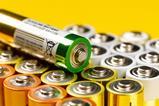

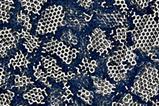
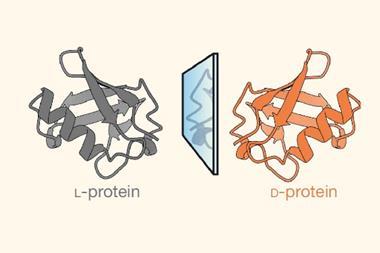











1 Reader's comment